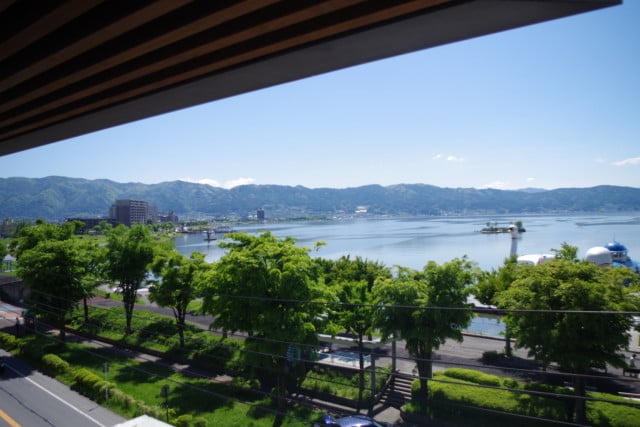
In a land-locked prefecture, the Suwa area is surprisingly blessed with water. The surface of lake Suwa offers beautiful, reflective views of the surrounding mountains and sky. Hot springs bubble up from the grounds of Kami and Shimosuwa and feed over 150 public bathing facilities in the area. And, fresh water from the highlands helps brew Suwa’s many award-winning rice wines.
Visitors to the area have been increasing in advent of the 2016 Onbashira festival, so I thought I’d take a closer look at Suwa’s activities and sights.
Suwa’s Hot Springs

The Suwa area has the highest volume of spring water (26,000 liters per minute) in all of Nagano prefecture. Hotels and onsen facilities dot the shoreline and many offer uninterrupted views of the lake and surrounding mountains. Foot baths around town offer convenient stops to rest and recuperate. There’s even a footbath in Kamisuwa station!
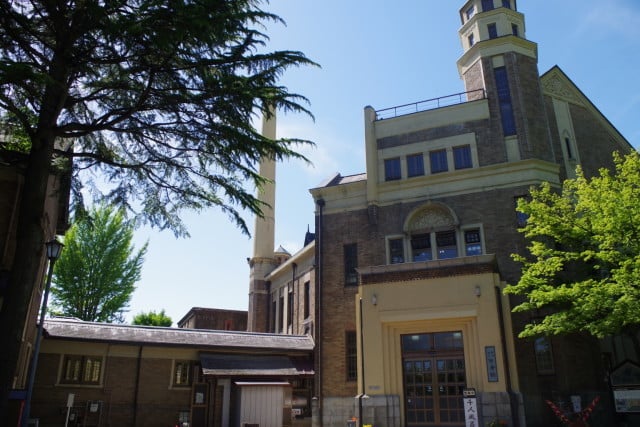
One of Kamisuwa’s most well-known onsen is called the Katakurakan1. It is a rustic brick building near Kamisuwa station with a large, deep hot spring bath. Pebbles carpet the bottom of the bath and massage your feet as you walk. The water is soothing and the Romanesque architecture is an interesting break from traditional Japanese bathhouses. It is also featured in a popular Japanese comedy movie, Thermae Romae 2.
English maps are available that show day-use hot spring facilities around Kamisuwa and Shimosuwa stations, and if you happen to be staying in the area your hotel or ryokan will most likely have their own baths as well. There’s certainly plenty of water to go around!
The Go-Kura Sake Breweries
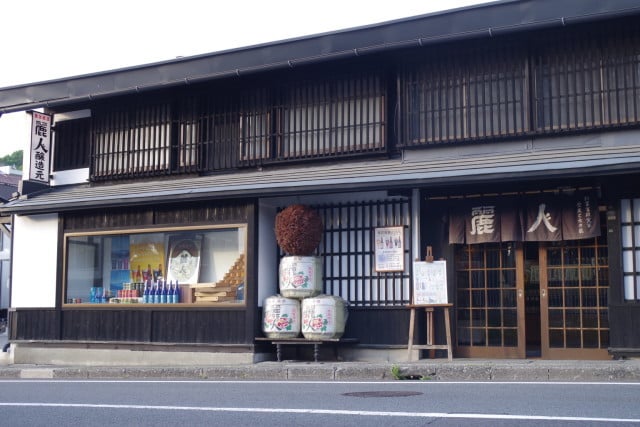
Suwa is home to numerous sake breweries that have been operating for hundreds of years. Just south of Kamisuwa station is a group of five breweries, called the Go-Kura2, which line the former Koshu kaido road. They are Mai-hime, Reijin, Honkin, Yokobue and Masumi. They all offer sake-tastings (and beer tasting at Reijin), so you can visit them all and appreciate the differences in style of each brewery.
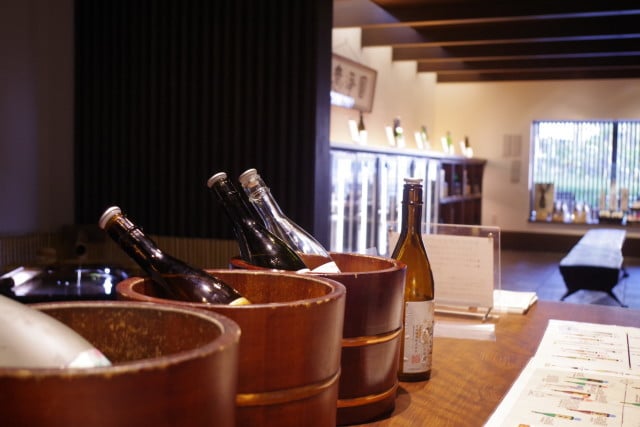
Many people are familiar with hot sake, but haven’t had the chance to try cold sake varieties such as Junmai, Ginjo and Daiginjo before. During spring, another popular cold sake is Namazake, an unpasteurized, particularly aromatic variety. You may be surprised by the fruity aromas and flavors that are produced from such simple ingredients as rice, yeast and water!
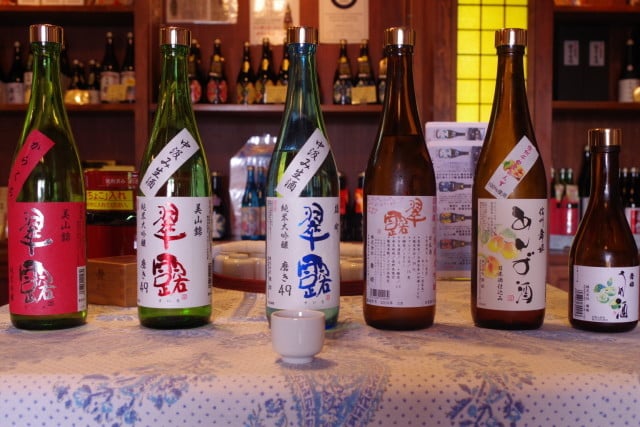
Highland Driving
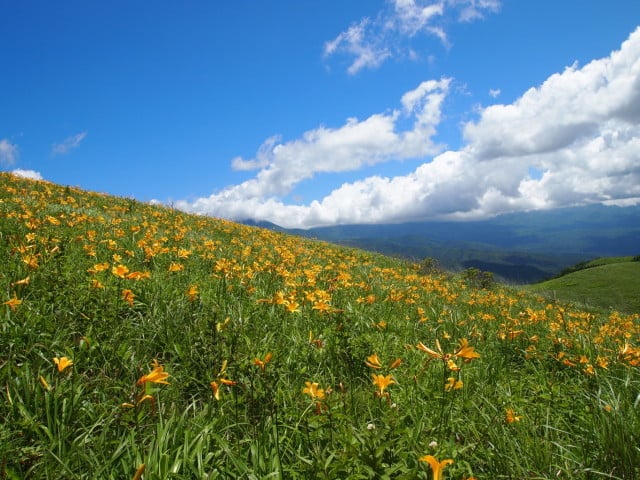
© The Suwa Tourism Association
To the east of Suwa lies Kirigamine Kogen, a highland area that makes up part of the Venus line3. Guests can gaze over fields of highland flowers during the green season, as well as amazing views of the clouds and even Mt. Fuji in the distance. Autumn brings fields of silver grasses and bright autumn colors, while winter covers the area in a carpet of white and blows delicate, shimmering snow crystals across the sky in a phenomenon called “diamond dust.”
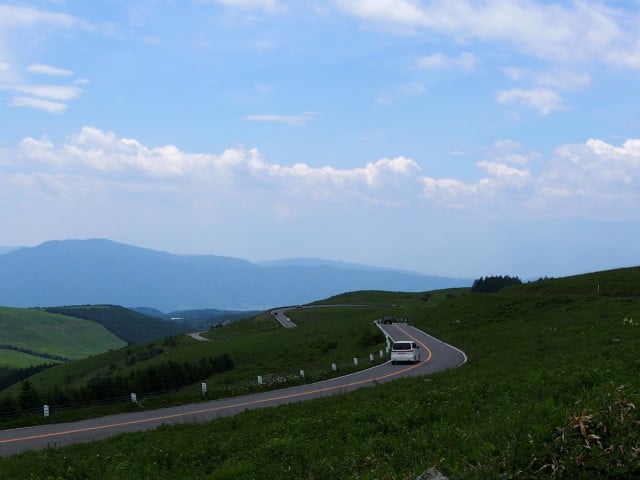
© The Suwa Tourism Association
Driving across the Venus line is a must for anyone in the area. The summer and autumn months are very popular times to visit (think June through late October) so get on the road early if you’re visiting on a weekend. Be aware that the Venus line closes around mid-November and opens again in late April.
Fireworks
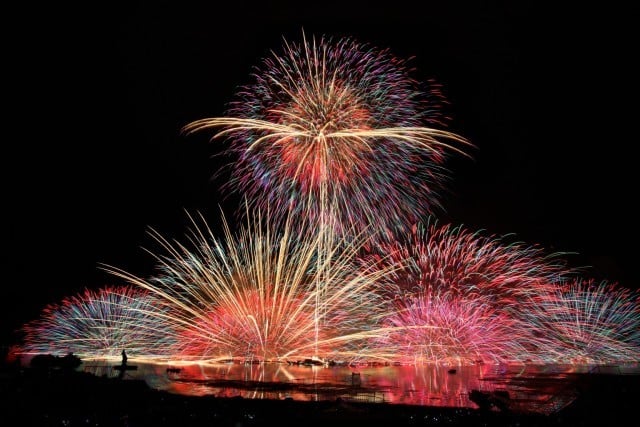
© The Suwa Tourism Association
In summer, Suwa comes alive with bright fireworks. Beginning in late July, fireworks can be seen bursting over lake Suwa every night. In mid-August, Suwa hosts its main fireworks festival, and in early September it hosts the smaller experimental fireworks festival.
During the August Fireworks festival, over 40,000 shells are launched into the air over the course of several hours. Fireworks of all shapes and sizes dance across lake Suwa and mesmerize hundreds of thousands of spectators. Last year, 500,000 people came from all over Japan (and beyond!) to see this powerful performance. 2016’s performance is set to happen on August 15th.
In September, the experimental fireworks festival gives select artists a chance to try new and original designs. Instead of traditional flower and star mine shapes, you may see jellyfish, mushrooms or even popular cartoon characters. It’s roughly half the size of Suwa’s August festival, but that’s still almost 20,000 fireworks and over 250,000 spectators! This year’s experimental fireworks festival is planned for September 3rd, 2016.
Shimosuwa
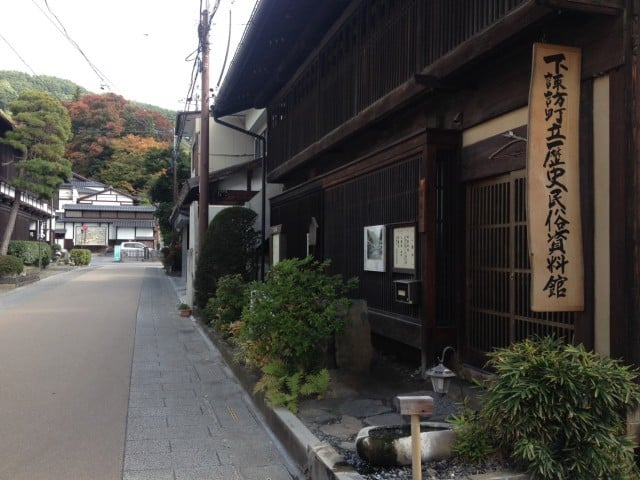
The town of Shimosuwa was once an important stopping point along the Nakasendo route between Kyoto and Edo. Many pieces of traditional architecture remain, and two of Suwa Taisha’s four shrines are here as well.
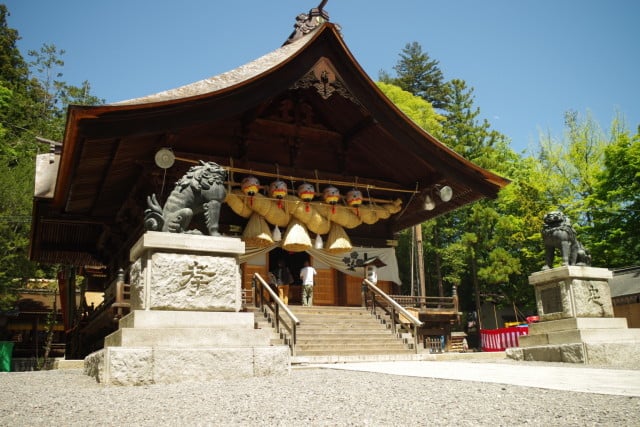
The Suwa Taisha shrine is now well known as the driving force of the Onbashira festival, and while you may not be able to see it for another six years (2022), you can see the newly planted pillars, visit the Onbashira center (Onbashira-kan Yoisa) outside of Harumiya, and see footage and equipment from the festival itself.
Along the Nakasendo trail is Shimosuwa’s Honjin inn4. As the main inn of Shimosuwa, it hosted many Daimyo lords, as well as the imperial princess Kazunomiya. You can see the room she stayed in just as it was hundreds of years ago. The nearby inn Kikyoya also serves a special Kazunomiya-inspired meal that recreates what she would have eaten (in admittedly larger portions) during her trip from Kyoto to Edo.
Among Shimosuwa’s Edo period buildings and streets are also the Gishodo Watch Museum5 and the Suwa-no-Ne Orgol (music box) Museum6. Suwa is a well-known area for precision machinery and is even home to the headquarters of Epson printing. In that vein, these museums offer a glimpse into the history and mechanics of watches and music boxes, and have workshops available where you can put together your own as a souvenir.
Additional information
And there you have it. The tranquil streets of the former Nakasendo, healing waters of Suwa’s hot springs, and shimmering lakeside scenery make for a relaxing summer holiday. It’s just too bad that you can’t swim in it…
For more information about the Suwa area, see their official English website!
Katakurakan
Hours: 10:00-21:00
Price: Adults/ 650 yen Kids/ 450 yen
Holidays: Closed 2nd and 4th Tuesdays
Access: 8 minute walk from Kamisuwa station.
Go-Kura Breweries
Maihime, Reijin, Honkin, Yokobue and Masumi breweries are a short distance from Kamisuwa station, lining route 20. Sake-tasting is free at four of the breweries, and costs 320 yen per person at Masumi. Beers can be sampled at Reijin for 100 yen each. More information can be found on the Go-Kura Japanese website.
Hours: 9:00~17:00/18:00 (Depending on brewery)
Price: Free (Excepting Masumi, 320 yen)
Holidays: Honkin is closed on Sundays
Access: A short walk from Kamisuwa station, along Route 20. See above links for exact locations.
Venus Line
Northbound: From Suwa IC exit, turn right onto Route 20. Continue straight and turn left onto Route 152 at Arai (新井). When you reach the Gozaishi Jinja intersection (御座石神社), turn left. Now you’re on the Venus line!
Southbound: The route begins from Utsukushigahara Kogen, which can be reached from the Matsumoto or Ueda areas. If you have GPS, type 0268-86-2331 into your device and it will take you to the Utsukushigahara Open Air Museum. You can continue southward along the Venus line from there.
People with Japanese proficiency may find this map useful in planning their trip.
Shimosuwa Honjin Inn
Known as having the most beautiful garden along the entire Nakasendo trail. Enjoy the tranquil scenery from
Jodan-no-Ma, where the princess Kazunomiya stayed on her journey from Kyoto to Edo. A Japanese inn called Chousenkaku Kameya continues to run part of the Honjin inn, for those interested in staying there.
Hours: 9:00~18:00
Price: Adults/ 400 yen Children/ 200 yen
Holidays: None
Gishodo Watch Museum
Learn about the history of clocks and watchs, and make you very own souvenir wristwatch. Workshops begin at 2700 yen for basic watchs and take about 20 minutes to complete (admission fee is separate). Longer workshops are available but require reservations in advance.
Hours: 9:00-17:00
Price (Admission only): Adults/ 800 yen Children/ 400 yen
Holidays: None (from Dec. to Feb, closed on Thursdays)
Suwa-no-Ne Orgol Museum
Shimosuwa’s newly renovated music box museum features a Japanese Orgol display room, boutique and cafe as well as workshop space. You can make your own music box here, choosing your own music and case, for 2200~2600 yen (admission separate). The workshop takes about 40 minutes to complete. It can be very busy during May and June, so it may be best to call in advance.
Hours:9:00-17:30 (until 17:00 during winter)
Price (Admission only): Adults/ 1000 yen Children/ 500 yen
Holidays: 1st Wednesday, Thursday of February
